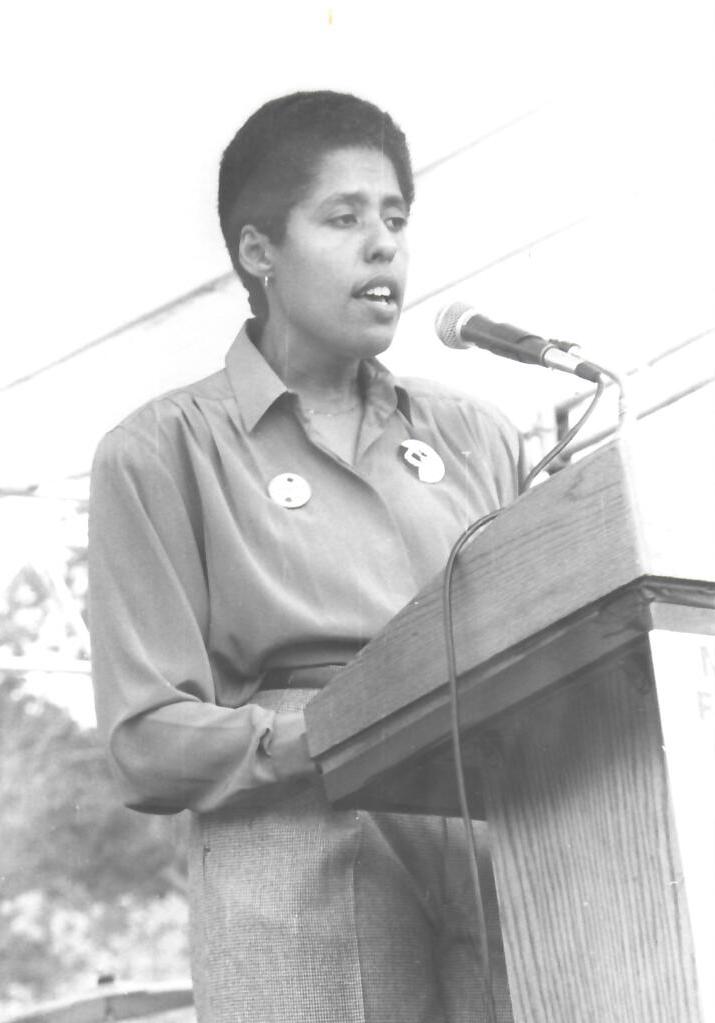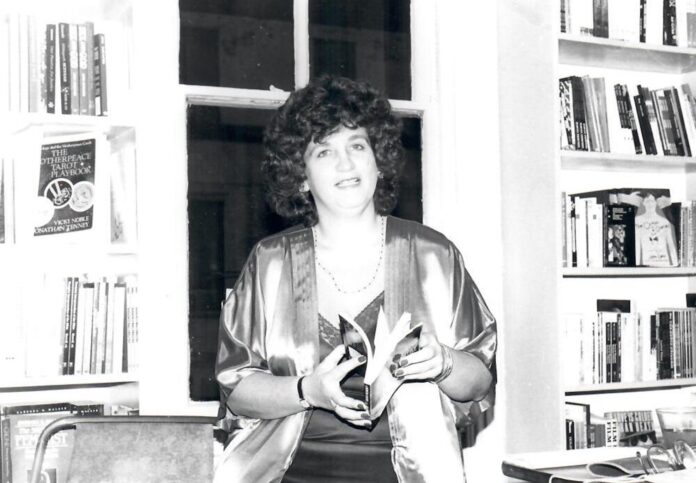March is Women’s History Month. If mainstream media acknowledges the month at all or any of the significant women historical figures in American history, it inevitably — and sometimes purposefully, in these days of “anti-wokeness” and “culture wars” — erases their lesbianism.
The only woman to date to ever have her own monetary denomination, suffragist and abolitionist Susan B. Anthony, was also a ribald lesbian who wrote steamy erotic letters to her female lovers. The incomparable Jane Addams, founder of modern social work, recipient of the Nobel Peace Prize, and co-founder of the NAACP, was a life-long lesbian. So too was Addams’s friend Dr. Alice Hamilton, founder of industrial medicine and the precursor to OSHA as well as a pioneering activist in labor legislation, civil liberties, and world peace.
Dr. Sally Ride was the first American woman in space, an astrophysicist, and partner to a woman for nearly 30 years. Congresswoman Barbara Jordan, civil rights leader, attorney, and the first woman and first Black person elected to Congress from Texas, was also partnered to a woman for over 30 years. They are on postage stamps, but their lesbianism has been erased.
American women’s history is, like lesbian and queer history, an evolving history. Here are five women who, along with countless others, have forged important, groundbreaking paths in queer, feminist and women’s history.
Joan Nestle (born May 12, 1940) co-founded the critically important Lesbian Herstory Archives. Nestle has said that her work of archiving history was fundamental to her identity, asserting that, “As a woman, as a lesbian, as a Jew, I know that much of what I call history others will not. But answering that challenge of exclusion is the work of a lifetime.”

Nestle writes in a segment for the Jewish Women’s Archive, “More than ever, I believe in a feminism that does not run from the full complexity of women’s lives, from the vital differences between us as well as the connections that bind us.”
She adds, “The Lesbian Herstory Archives is a place of remembering, of refusal of historical exile, where as a Jew from working class roots and a femme feminist from the queer 1950s, I could help ensure that shame and assimilation did not win out over our wondrous complexities. The archives must be a home big enough for all of us.”
A Lambda Award winning writer and editor whose erotic writing and memoirs had a groundbreaking influence on lesbian culture and society, Nestle also has a new book out this month, “The Sturdy Yes of a People.”
The Lesbian Herstory Archives is a designated historic site in New York that was born in Nestle’s apartment nearly 50 years ago.
Joan E. Biren, known also as JEB (born July 13, 1944) is a lesbian feminist photographer and filmmaker whose focus is lesbians and other LGBT people. JEB’s photographs gave us images that had been hidden from view — lesbians being lesbian in everyday life — as well as anti-racism and visibility of lesbian imagery in political and social contexts.
Biren was also engaged in lesbian-feminist political theory with Rita Mae Brown and Charlotte Bunch. She was a founding member of the Furies Collective, a radical experiment in lesbian feminist separatist communal organizing. The Furies Collective also published a journal, The Furies.
JEB’s many films include “No Secret Anymore: The Times of Del Martin” and “Phyllis Lyon and For Love and For Life: The 1987 March on Washington for Lesbian and Gay Rights”.
Biren said she became a photographer because “I needed to see images of lesbians.” She said, “wherever lesbians gathered, where I could take pictures, I would be there.” “Eye to Eye: Portraits of Lesbians” (1979) and “Making a Way: Lesbians Out Front” (1987) were innovative and groundbreaking books of photographs of lesbians.
Barbara Smith (born November 16, 1946) is a lesbian feminist, socialist, scholar, activist, critic, lecturer, author, and publisher of Black feminist thought. She has also taught at numerous colleges and universities for 25 years. Smith helped craft the concept of intersectionality with the founding of the Combahee River Collective, a class-conscious, sexuality-affirming Black feminist organization focused on the intersections of racial, gender, heterosexist and class oppression for Black women and other women of color.

Smith founded Kitchen Table: Women of Color Press in 1980. She published collections that have become classics and foundational texts to the new literary canon of women of color that Smith aspired to create. Smith was the first scholar to coin the term “identity politics.” Smith said, “Black women, whose experience is unique, are seldom recognized as a particular social-cultural entity and are seldom thought to be important enough for serious scholarly consideration.”
Smith writes, “One of the greatest gifts of Black feminism to ourselves has been to make it a little easier simply to be Black and female.”
On the breadth of feminism and its inclusivity, Smith writes, “Feminism is the political theory and practice that struggles to free all women: women of color, working-class women, poor women, disabled women, lesbians, old women — as well as white, economically privileged, heterosexual women. Anything less than this vision of total freedom is not feminism, but merely female self-aggrandizement.”
Lenore Chinn (born June 20, 1949) is an Asian-American artist and lesbian activist. Chinn was a founding member of Lesbians in the Visual Arts and Queer Cultural Center (QCC) and served on the San Francisco Human Rights Commission. She is an art curator and an active member of the Asian American Women Artists Association. Chinn speaks widely on the intersection of her Asian and lesbian identities, which is reflected in her work.
In an interview for Queer Cultural Center TV, Chinn said of her work, “My signature paintings, with their super realistic, crisply rendered compositions, convey a subtle message of visibility for the socially and politically disenfranchised peoples in my personal social landscape — people of color, women, lesbians, and gay men.”
Chinn continued, “Through character studies in contemporary themes I restore cultural difference to center stage, creating a presence which resonates in its luminosity, texture, color, and light. While enticing the viewer with a non-confrontational aesthetic, these narratives simultaneously challenge old world views and compel a rethinking of how we define society’s others.”
Cherríe Moraga (born September 25, 1952) is a writer, feminist activist, poet, essayist and playwright. Moraga is a founding member of the social justice activist group La Red Xicana Indígena, an organization fighting for education, culture rights and Indigenous Rights. Moraga has long been viewed as the first to write specifically about Chicana lesbians. Moraga co-edited the classic anthology “This Bridge Called My Back: Writings by Radical Women of Color” with Gloria Anzaldúa in 1981.
In “La Guera,” Moraga linked her experiences of being discriminated against as a lesbian to the discrimination her mother experienced as a poor, uneducated Mexican woman. Moraga wrote, “My lesbianism is the avenue through which I have learned the most about silence and oppression, and it continues to be the most tactile reminder to me that we are not free human beings.”
Moraga says, “The nationalism I seek is one that decolonizes the brown and female body as it decolonizes the brown and female earth.”
In “This Bridge Called My Back: Writings by Radical Women of Color”, Moraga has words with crucial meaning for us now, today, as the right is trying to erase and even eradicate LGBTQ people. She wrote, “Complacency is a far more dangerous attitude than outrage.”

